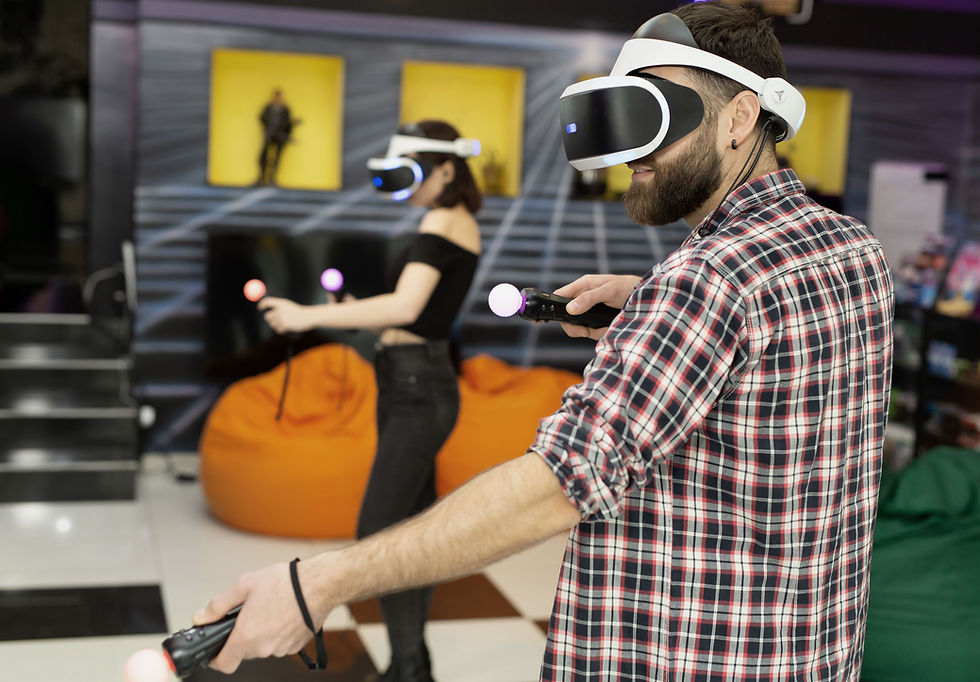Enhancing Tech Creativity with Virtual Reality and XMLTV Programs
- Jel Solutions

- Feb 22, 2024
- 3 min read
Updated: Aug 15, 2024
Unleash your creativity in Virtual Reality and Interactive Media with the
latest XMLTV EPG format
Virtual Reality (VR) and Electronic Program Guides (EPG) like XMLTV Programs can be powerful tools for boosting creativity in the xmltv guide epg for iptv providers. Here's a detailed guide on how to leverage these technologies to enhance creativity and create unforgettable VR experiences:

VR Technology and XMLTV Programs
Virtual Reality (VR): VR technology creates a simulated environment that can be similar to or completely different from the real world. It's commonly used in entertainment, gaming, and educational applications.
XMLTV Programs: XMLTV is a set of programs to process TV (TV guide) listings and help you manage your TV viewing. It provides a means to access and produce a wide range of TV channels in xmltv format.
Exploring Sandbox VR
Sandbox VR: Sandbox VR is a company that combines virtual reality technology with physical spaces to create immersive, interactive experiences.
Leveraging VR and EPG for Creativity
Immersive Storytelling: Utilize VR to craft immersive storytelling experiences that transport users to different worlds and periods. For example, you can use the newest epg program guide to access TV listings and create a VR experience that mirrors a popular TV show or movie.
Incorporate realistic elements to enhance immersion, such as lighting, textures, and spatial audio.
Interactive Environments: Create interactive virtual environments using Sandbox VR technology that responds to user input. For instance, you can integrate XMLTV Programs to pull real-time TV schedules and create VR experiences that allow users to step into their favorite TV shows or movies.
Create a virtual escape room where users must solve puzzles and interact with the environment to progress.
Multi-Sensory Experiences: Use VR to engage multiple senses, such as sight, sound, and even touch, to create truly unforgettable experiences.
By integrating xmltv listings, you can synchronize virtual experiences with real-world TV programming, enhancing the overall sensory impact.
Select the appropriate VR platform for your project, considering factors such as hardware compatibility and user accessibility.

Identify Inspiration: Find inspiration from popular TV shows, movies, or historical events that can be reimagined in a VR environment. Determine the primary purpose of the virtual environment. Is it for entertainment, education, training, the nationwide auto transport companies industry, or something else?
Design Immersive Environments: Utilize Sandbox VR technology to design visually stunning and interactive virtual environments that align with your chosen inspiration. Select a theme that aligns with the purpose. For example, if it's for entertainment, the theme could be a fantasy world, a historical era, or a futuristic setting.
Integrate Storytelling: Develop compelling narratives that guide users through the VR experience, leveraging elements from xmltv information content blogs to incorporate real-time TV scheduling or historical TV events. If applicable, incorporate features that enable social interaction, such as multiplayer capabilities or communication tools.
Utilize Real-time Data: Use xmltv information to access real-time TV listings and integrate them into the VR experience, allowing users to interact with virtual representations of live or scheduled TV content. Make use of VR development tools and software to streamline the design and implementation process.
Engage Multiple Senses: Incorporate audio, visuals, and even haptic feedback to engage users' senses and create a fully immersive experience. Design user interfaces that are easy to navigate and visually appealing. This includes menus, buttons, and interactive elements.
Test and Iterate: Conduct thorough user testing to gather feedback on the interactive elements, user interface, and overall experience. Design the environment to respond dynamically to user actions. For example, objects should react realistically when touched or moved. Use user feedback to refine the design, addressing any issues or areas for improvement.
Creative Journeys with Sandbox VR
Recreating Historical Moments: Use XMLTV Programs to access historical TV schedules and recreate pivotal moments in history as immersive VR experiences.
Design virtual replicas of historical landmarks that users can explore and interact with, providing educational insights along the way.
Interactive TV Show Experiences: Develop VR experiences that allow users to step into their favorite TV shows, interact with characters, and explore iconic locations.
Develop interactive training simulations for professional or educational purposes, allowing users to practice real-world scenarios in a virtual environment.
Live Event Simulations: Integrate real-time TV listings to create VR simulations of live events, such as award shows or sports games, providing users with a unique perspective on the event.
Include interactive elements that allow users to engage with the environment. This can involve picking up objects, solving puzzles, or manipulating the surroundings.
By leveraging Sandbox VR technology and XMLTV Programs, you can push the boundaries of tech creativity, inspire innovation, and create unforgettable virtual reality experiences that captivate audiences and immerse them in entirely new creative journeys.




Comments